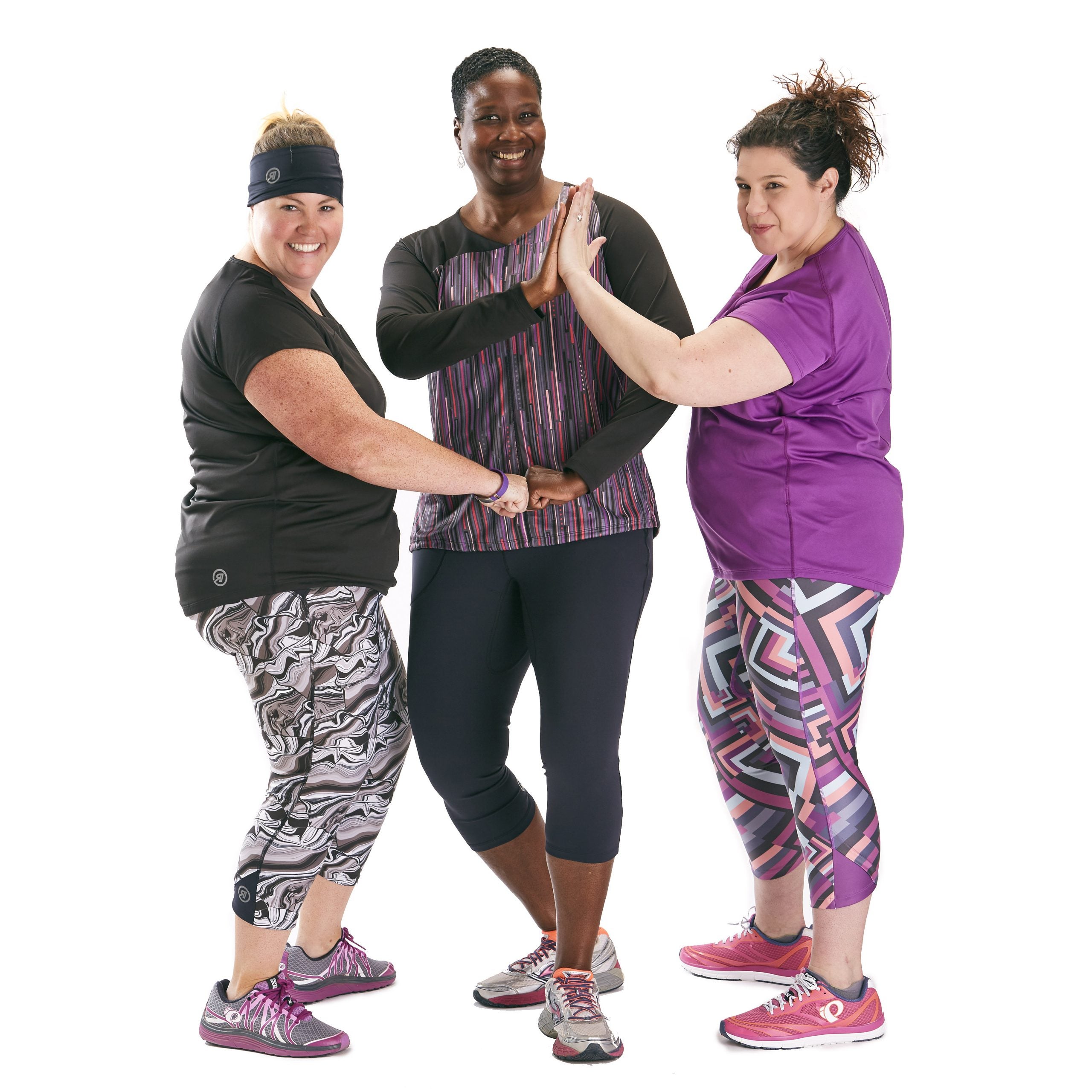Americans' bodies come in a huge range of��shapes and sizes. Yet clothing options represent a tiny fraction of that diversity, as evidenced in part by a recent study published in the that found the majority of women have trouble finding clothes that fit them.��
The researchers polled��5,552 women via the ��to determine that the average woman wears a “straight”��size 16 to 18—the equivalent of a “plus”��20W. Size 14 has generally been recognized as the beginning of plus-size clothing, and most brands run��the majority of their apparel , and then stop��there. The options for larger women��simply don't exist or are too low caliber, say Deborah Christel and Susan Dunn, the co-authors of the study.��
Performance-apparel makers are even worse. Only a handful of these brands, including , , , and , offer “extended”��sizes, which typically means they offer apparel options larger than XL.��And until , there were zero��performance apparel brands dedicated to plus sizes.��The new online��sportswear brand exclusively sells apparel in sizes��10 and up.��
“Our overall mission is to make Athena [plus]��size performance wear, so that every woman can be active,”��says Rsport's founder��C.J.��Riggins, who has two decades of product experience at brands like��Abercrombie & Fitch,��Salomon,��and Pearl��Izumi. “We don't need to be all things to all people: If we go lower than size 10, we will end up refocusing on other women's needs and failing to meets everyone’s needs as a result.”��
More public figures are vocalizing their desire for ad campaigns and media��to reflect more diverse body types.��Chief among them is��marathoner Kelly Roberts, size 8 to 10, who started the #SportsBraSquad. Brands are paying attention. that range from 1X to 3X. launched its 2017 #ThisBody campaign to spotlight the stories of plus size fitness leaders like choreographer Jessie Diaz and triathlete Krista Henderson.��
To engage her customers, many of whom had been relegated to online shopping or single dusty racks in the back, Riggins plans to sell products at running and triathlon events across the country. The plan is to eschew a brick-and-mortar shop for a decked-out Airstream (coming soon) that will offer pop-up shopping experiences and partner with other brands that prioritize plus wear.��
Rsport will outfit women from size 10 to 34 (also labeled 6X), regardless of whether she is a novice weekend warrior or a professional athlete. The average woman's size aligns with the brand's XL. “We fit to the middle of the range and scale out using fit models for the whole gamut,”��says Riggins: size 22-24 (3X) is at the center, with three larger and three smaller sizes. ��
Rsport launched with six multi-sport apparel pieces, including long and short sleeve shirts, a fleece jacket, capris, and tank top. “Apparel channels—trail running, climbing, mountain biking, etc.—are appropriate but don't always need to exist,”��says Riggins. The stuff is designed for any endeavor, from weight lifting and hiking to high-intensity training and endurance sports.��
The line is about what you'd expect from a high-end performance sportswear maker: integrated fabric solutions rather than treatments applied afterwards, which helps boost durability through multiple washes; seam-free panels; high-wicking synthetics. “This consumer has been an afterthought in sport but is the forethought for us: other plus-size apparel is made to fit but not to activate for this woman's fullest potential on a bike or ski hill. We are in the science lab—why not make bomb-level apparel for everyone?”��she says.��
Over the next few years, the line will expand with head-to-toe options, including sports bras. A few brands already make great plus-size bras, , lauded by Oprah, and century-old . The central goal for Riggins is to build products that address unmet needs.��
“Getting out the door is the first step for every consumer,” says Riggins. “If I can help her ignore her clothing, because it's working for her—she's not chilly, doesn't feel��feels abrasion, the pants aren't sliding down while running—then that will help her get out and move.”


